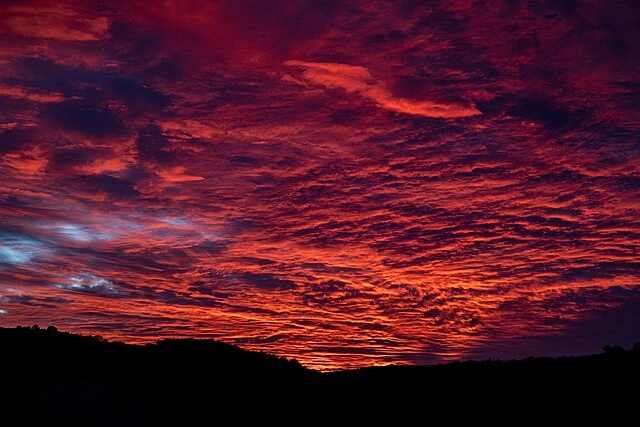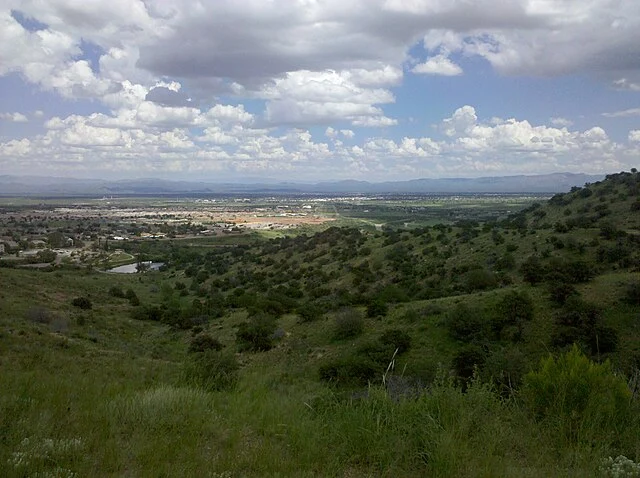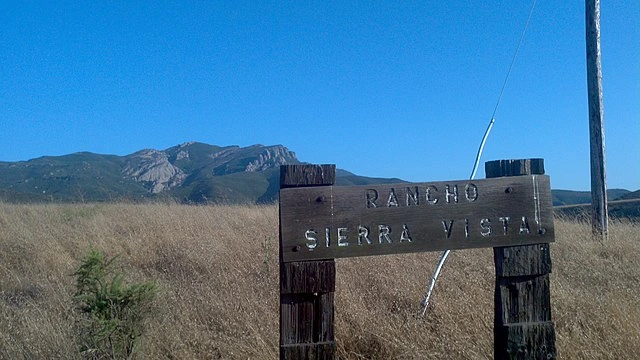Sierra Vista, Arizona, sits like a jewel in the Sonoran Desert, offering residents and visitors a unique climate experience that’s quite different from what you might expect in the Grand Canyon State. Have you ever wondered why this charming city enjoys such pleasant weather year-round? The answer lies in its strategic location and elevation, creating a microclimate that’s become one of Arizona’s best-kept secrets.
Nestled in the southeastern corner of Arizona, Sierra Vista boasts a high desert climate that combines the warmth of the Sonoran Desert with the cooling effects of elevation. This perfect storm of geographic factors creates weather patterns that are both predictable and pleasantly surprising throughout the year.
Understanding Sierra Vista’s Unique Climate Zone
Sierra Vista’s climate classification falls under the semi-arid category, but don’t let that fool you into thinking it’s just another hot, dry desert town. The city’s weather story is far more nuanced and interesting than you might imagine.
The high desert climate here means you’ll experience four distinct seasons, each with its own personality and charm. Unlike the scorching heat that dominates much of Arizona, Sierra Vista maintains a more moderate temperature range throughout the year, making it an attractive destination for those seeking refuge from extreme weather conditions.
Geographic Factors That Shape Local Weather
Geography plays the starring role in Sierra Vista’s weather drama. The city sits in the Upper Sonoran Life Zone, surrounded by mountain ranges that act like natural air conditioners. The Huachuca Mountains to the southwest, the Dragoon Mountains to the north, and the Chiricahua Mountains to the east all contribute to the area’s unique weather patterns.
These mountain ranges create what meteorologists call “orographic lifting,” where air masses are forced upward, cooling as they rise and often producing localized weather phenomena. This geographic positioning means Sierra Vista often enjoys cooler temperatures and more precipitation than surrounding lower-elevation areas.
The city’s location also places it in the path of weather systems moving in from both the Pacific Ocean and the Gulf of Mexico, creating an interesting mix of weather influences throughout the year.
Elevation’s Impact on Temperature and Precipitation
At approximately 4,600 feet above sea level, Sierra Vista enjoys what locals call the “elevation advantage.” This height above sea level translates to temperatures that are typically 10-15 degrees cooler than Phoenix or Tucson, making summer days much more bearable and winter nights refreshingly crisp.
The elevation also affects precipitation patterns significantly. Higher elevations generally receive more rainfall, and Sierra Vista is no exception. The city averages about 15 inches of precipitation annually, which is considerably more than many other Arizona communities.
This elevation sweet spot means you get the best of both worlds: enough altitude to moderate temperatures without the extreme cold that comes with higher mountain elevations.
Seasonal Weather Patterns in Sierra Vista

Understanding Sierra Vista’s seasonal patterns is like learning to read nature’s calendar. Each season brings its own weather personality, and knowing what to expect can help you plan everything from weekend activities to your wardrobe choices.
Spring Weather: March to May
Spring in Sierra Vista is absolutely magical – it’s when the desert comes alive with wildflowers and the weather hits that perfect sweet spot that makes you want to spend every moment outdoors.
Temperature Trends and Rainfall
March typically starts with daytime highs in the mid-60s to low 70s, gradually warming to the comfortable 80s by May. Nighttime temperatures during spring range from the 40s in March to the 50s and 60s in May, making it perfect sleeping weather with open windows.
Spring rainfall is generally light but welcome, with occasional gentle showers that bring out the desert’s hidden colors. March and April can see some of the year’s most beautiful weather, with crystal-clear skies and unlimited visibility of the surrounding mountain ranges.
What to Expect for Outdoor Activities
This is prime hiking season in Sierra Vista. The comfortable temperatures and longer daylight hours make it ideal for exploring the numerous trails in the area. You’ll want to dress in layers during spring, as mornings can be cool while afternoons warm up nicely.
Spring is also perfect for outdoor events, festivals, and camping. The weather is stable enough for planning outdoor activities well in advance, with minimal chance of extreme weather disrupting your plans.
Summer Weather: June to August
Summer in Sierra Vista is where the city really shines compared to other Arizona locations. While Phoenix and Tucson are sweltering in triple-digit heat, Sierra Vista maintains much more reasonable temperatures.
Monsoon Season Characteristics
The summer monsoon season, typically running from July through September, is one of Sierra Vista’s most distinctive weather features. These aren’t the gentle rains of spring – monsoon storms can be dramatic affairs with impressive lightning displays, heavy downpours, and occasionally hail.
Monsoon storms usually build in the afternoon and evening, often preceded by dramatic cloud formations that create spectacular photography opportunities. The storms are typically brief but intense, dropping significant rainfall in short periods and providing welcome relief from summer heat.
Humidity levels rise during monsoon season, making the air feel more tropical than what you’d expect in the desert. This increased moisture also supports more diverse plant life and creates the lush, green landscape that surprises many first-time visitors.
Heat Management and Safety Tips
Even with its elevation advantage, Sierra Vista summer days can reach the 90s and occasionally touch 100 degrees. The key to enjoying summer weather here is understanding that the heat is typically dry (outside of monsoon season) and that evenings cool down significantly.
Early morning and evening hours are ideal for outdoor activities during summer. The low humidity means shade provides genuine relief from the heat, and the temperature drop after sunset can be quite dramatic.
Fall Weather: September to November
Fall might just be Sierra Vista’s most underrated season. As the monsoons fade and the intense summer heat gives way to perfect autumn weather, the city transforms into an outdoor enthusiast’s paradise.
Temperature Transitions
September still carries some summer heat, with daytime highs in the 80s and 90s, but by October, temperatures settle into the comfortable 70s and 80s. November brings even more pleasant weather, with daytime highs in the 60s and 70s and nighttime temperatures that might require a light jacket.
The transition from summer to fall is gradual and pleasant, without the dramatic temperature swings that characterize autumn in many other parts of the country.
Best Time for Hiking and Outdoor Events
Fall is arguably the best time for outdoor activities in Sierra Vista. The weather is stable, temperatures are comfortable for extended outdoor time, and the summer monsoons have usually ended, reducing the chance of unexpected storms.
This is peak season for hiking, camping, and outdoor festivals. The clear, crisp air provides excellent visibility for photography and stargazing, and the comfortable temperatures make it easy to spend entire days outdoors.
Winter Weather: December to February
Winter in Sierra Vista is what draws many people to the area permanently. While much of the country is dealing with snow, ice, and freezing temperatures, Sierra Vista enjoys mild, pleasant winter weather that’s perfect for outdoor activities.
Mild Winters and Occasional Frost
Daytime winter temperatures typically range from the 50s to 60s, with plenty of sunshine to keep things comfortable. Nighttime temperatures can drop into the 30s and 40s, and occasional frost is possible, especially in January and February.
Snow is rare in Sierra Vista proper, though the surrounding mountains often receive snowfall that creates beautiful scenery and excellent photography opportunities. When snow does occur in town, it’s usually light and melts quickly.
Holiday Weather Expectations
Winter holidays in Sierra Vista offer a unique experience – Christmas might be sunny and 65 degrees, perfect for outdoor celebrations. The clear, dry air and abundant sunshine make winter an excellent time for visitors from colder climates.
The lack of extreme cold means outdoor holiday activities are entirely feasible, from outdoor markets to hiking on Christmas Day.
Monthly Weather Breakdown

Understanding Sierra Vista’s weather month by month can help you plan visits, activities, and even long-term living decisions. Each month has its own character and charm.
January Through June Weather Details
January starts the year with mild, pleasant weather. Daytime highs typically reach the upper 50s to low 60s, while nighttime lows can dip into the 30s. It’s sweater weather during the day and jacket weather at night.
February continues the mild winter pattern, with temperatures beginning to climb slightly. Daytime highs move into the 60s, and nighttime lows moderate into the 40s. This is excellent weather for outdoor activities and exploring the area.
March marks the beginning of the spring warming trend. Daytime temperatures climb into the 70s, making it perfect weather for hiking and outdoor events. Night temperatures remain comfortable in the 40s and 50s.
April is often considered one of the best weather months in Sierra Vista. Daytime highs reach the comfortable 70s and low 80s, while nighttime temperatures settle into the 50s. Rainfall is minimal, and skies are typically clear.
May continues the excellent spring weather pattern, with daytime highs in the 80s and nighttime lows in the 60s. This is prime outdoor season, with perfect weather for camping, hiking, and outdoor events.
June marks the transition to summer, with daytime temperatures climbing into the 90s. However, the dry heat and elevation advantage keep conditions much more comfortable than in lower-elevation Arizona cities.
July Through December Weather Details
July is the height of summer and the beginning of monsoon season. Daytime temperatures can reach the mid-90s, but the monsoon storms provide afternoon and evening relief. Humidity levels rise, making the air feel more tropical.
August continues the summer monsoon pattern, with afternoon thunderstorms and high humidity. Temperatures remain in the 90s during the day, but the frequent cloud cover and rain provide regular relief from the heat.
September sees the gradual end of monsoon season and the beginning of fall’s pleasant weather. Daytime temperatures start in the 90s but gradually moderate as the month progresses.
October brings some of the year’s most perfect weather, with daytime highs in the 70s and 80s and clear, dry air. This is prime time for outdoor activities and one of the most popular months for visitors.
November continues the excellent fall weather pattern, with daytime temperatures in the 60s and 70s and nighttime temperatures requiring light jackets. The weather is stable and predictable.
December returns to mild winter weather, with daytime highs in the 50s and 60s and nighttime lows in the 30s and 40s. Despite being winter, sunny days are common, and outdoor activities remain comfortable.
Extreme Weather Events and Preparedness
While Sierra Vista enjoys generally mild weather, it’s important to understand the potential for extreme weather events and how to prepare for them.
Thunderstorms and Flash Floods
Monsoon thunderstorms can be intense and potentially dangerous. These storms can produce heavy rainfall in short periods, leading to flash flooding in washes and low-lying areas. Lightning is also a significant concern during these storms.
The key to thunderstorm safety is staying informed about weather conditions and avoiding outdoor activities when storms are approaching. If you’re caught outdoors during a thunderstorm, seek shelter in a substantial building or hard-topped vehicle.
Flash flooding is a real concern in Sierra Vista, particularly in the numerous washes and drainage areas throughout the region. Never attempt to drive through flooded roadways – turn around and find an alternate route.
Dust Storms and Wind Events
Dust storms, while less common than in other parts of Arizona, can occasionally affect Sierra Vista. These storms can reduce visibility to near zero and pose serious health risks, particularly for people with respiratory conditions.
Strong winds can also occur, particularly during the transition seasons. These winds can create fire hazards and make driving difficult, especially for high-profile vehicles.
Best Times to Visit Sierra Vista
Timing your visit to Sierra Vista depends largely on what you want to do and your tolerance for different weather conditions.
Peak Tourist Seasons
Fall and spring are generally considered the best times to visit Sierra Vista. October through April offers the most consistently pleasant weather, with comfortable temperatures and minimal rainfall. This is when most outdoor festivals and events are scheduled.
Winter months are particularly popular with visitors from colder climates who want to escape snow and freezing temperatures. The mild winter weather makes it possible to enjoy outdoor activities year-round.
Weather-Based Activity Recommendations
For hiking and outdoor activities, fall and spring offer the best conditions. Summer can be excellent for early morning or evening activities, and the monsoon season provides its own unique experiences for weather enthusiasts.
Winter is perfect for visitors who want to enjoy outdoor activities without extreme cold, making it an ideal time for camping, hiking, and exploring the area’s natural attractions.
How Sierra Vista Weather Compares to Other Arizona Cities

Sierra Vista’s weather advantage becomes clear when compared to other Arizona cities. While Phoenix and Tucson regularly experience summer temperatures above 110 degrees, Sierra Vista rarely exceeds 100 degrees.
The elevation advantage means Sierra Vista enjoys cooler temperatures year-round, more precipitation, and generally more comfortable outdoor conditions. This makes it an attractive alternative for people who want to live in Arizona but prefer more moderate weather.
Winter temperatures in Sierra Vista are similar to other Arizona cities, but the summer relief makes it a more comfortable year-round climate for many people.
Climate Change Impact on Sierra Vista Weather
Like many locations, Sierra Vista is experiencing some changes in weather patterns that may be related to climate change. These changes include shifts in precipitation patterns, temperature trends, and the timing of seasonal weather events.
Monitoring these changes is important for long-term planning and understanding how the local climate might evolve in the coming decades.
Weather Resources and Forecasting Tools
Staying informed about Sierra Vista weather conditions requires reliable sources and tools. The National Weather Service provides detailed forecasts and warnings for the area, while local weather stations offer real-time conditions and specialized local forecasts.
Weather apps and websites can provide current conditions and forecasts, but local knowledge and experience remain valuable for understanding how weather patterns affect specific areas and activities.
Living with Sierra Vista Weather: Local Tips
Long-time Sierra Vista residents have developed strategies for making the most of the local climate. These include understanding microclimates within the area, knowing how to dress for temperature variations, and timing outdoor activities to take advantage of the best weather conditions.
Local knowledge about weather patterns, seasonal changes, and extreme weather preparedness can make a significant difference in your experience living in or visiting Sierra Vista.
Conclusion
Sierra Vista’s weather is truly one of its greatest assets, offering a unique combination of high desert climate benefits with moderate temperatures and distinct seasonal variations. The city’s elevation advantage and geographic location create a microclimate that’s more comfortable and predictable than many other Arizona destinations.
Whether you’re planning a visit, considering a move, or simply curious about this hidden gem in southeastern Arizona, understanding Sierra Vista’s weather patterns will help you appreciate why so many people fall in love with this special place. From mild winters perfect for outdoor activities to summers that are actually enjoyable, Sierra Vista weather offers something for everyone throughout the year.
The key to enjoying Sierra Vista’s climate is understanding its patterns and preparing appropriately for each season. With proper planning and realistic expectations, you’ll find that Sierra Vista’s weather enhances rather than limits your outdoor lifestyle and activities.
Frequently Asked Questions
Q: What is the average temperature in Sierra Vista throughout the year?
A: Sierra Vista enjoys moderate temperatures year-round, with average highs ranging from the upper 50s in winter to the mid-90s in summer. The elevation advantage keeps temperatures about 10-15 degrees cooler than Phoenix or Tucson, making it comfortable for outdoor activities most of the year.
Q: When is monsoon season in Sierra Vista, and what should I expect?
A: Monsoon season typically runs from July through September, with peak activity in July and August. Expect dramatic afternoon and evening thunderstorms with heavy rainfall, lightning, and occasionally hail. These storms are usually brief but intense, and they bring welcome relief from summer heat while increasing humidity levels.
Q: Does it snow in Sierra Vista?
A: Snow is rare in Sierra Vista proper, occurring only occasionally during winter months. When snow does fall, it’s usually light and melts quickly. However, the surrounding mountains often receive snowfall, creating beautiful scenery and excellent photography opportunities.
Q: What’s the best time of year to visit Sierra Vista for outdoor activities?
A: Fall (October-November) and spring (March-May) offer the best conditions for outdoor activities, with comfortable temperatures, clear skies, and minimal rainfall. Winter is also excellent for visitors from colder climates, while summer mornings and evenings can be perfect for outdoor adventures.
Q: How does Sierra Vista’s weather compare to other popular Arizona retirement destinations?
A: Sierra Vista offers significant advantages over lower-elevation Arizona cities like Phoenix and Tucson, with cooler summer temperatures, more precipitation, and generally more comfortable year-round outdoor conditions. The elevation advantage makes it an attractive alternative for people who want Arizona’s sunny climate without the extreme heat.

